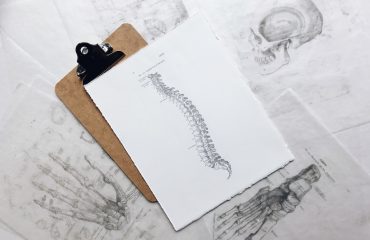Kinesio Tape – those colorful, crisscrossed strips you’ve probably seen on athletes, weekend warriors, and anyone braving the gym for more than 10 minutes. It’s not just decoration! This tape has a rich history, some nifty science behind it, and a whole range of uses that go beyond looking like you’re ready to win the next Olympic event. Let’s dive in and see how you can use it at home, and how we can help you make the most of it in our office!

The Origins of Kinesio Tape: Japan, 1970s Style
Dr. Kenzo Kase, a Japanese chiropractor, and acupuncturist, first developed Kinesio Tape back in the 1970s. Dr. Kase saw that many athletes and patients needed support that wouldn’t restrict their movement. Traditional athletic taping methods were great for stability but weren’t ideal for keeping muscles and joints moving freely. After plenty of trial and error, he developed a stretchy, flexible adhesive tape that mimicked the skin’s natural elasticity – and voila! Kinesio Tape was born.
Its popularity boomed in the 2008 Beijing Olympics when athletes from various sports used it openly on the field and in competitions. From then on, Kinesio Tape started making its way from elite sports arenas to everyday gyms, clinics, and living rooms. And, it turns out, there’s science to support its hype. Studies have shown that Kinesio Tape can improve circulation, reduce pain, and provide some much-needed support without limiting range of motion. Pretty impressive for some fancy tape, right?
Since Dr. Kase’s invention, many other brands of tape have been produced. For instance, “KT” tape was created by Jim Jenson in 2008 to provide easier and more accessible kinesio tape. Other companies such as RockTape have come up with their own versions of Kinesio tape. 
Kinesio Tape Applications: Not Just for the Pros!
Kinesio Tape isn’t reserved for Olympians and CrossFit champs – it’s for anyone looking to give their body some extra TLC. Here’s a quick rundown of how it can be used:
- Muscle Support: Strained your back lifting boxes? Or maybe your neck from a long desk session? Kinesio Tape offers gentle support that can ease tension while keeping your movement natural.
- Joint Stability: Struggling with a creaky knee or sore ankle? Tape can help stabilize the joint, making it easier for you to move with less pain. Perfect for anyone tackling stairs, workouts, or an overly enthusiastic dog pulling you down the street!
- Circulation Boost: The gentle lift that Kinesio Tape provides can improve blood and lymphatic flow, which can help reduce swelling and inflammation in problem areas – think of it like a mini circulation boost.
- Pain Relief: By stimulating skin receptors and lifting the skin slightly, the tape can lessen pain signals in the body. Imagine a tiny little cheerleader attached to your skin, encouraging you with every step.
How to Use Kinesio Tape at Home (and Why We’re Here to Help!)
If you’re feeling inspired to break out some Kinesio Tape at home, great! But let’s make sure you do it right. Here’s a step-by-step for DIY taping:
- Choose Your Spot: Pick an area where you’re feeling discomfort. This could be your shoulders, neck, lower back, knee, or ankle.
- Clean the Skin: Kinesio Tape is most effective on dry, clean skin. Make sure there’s no lotion or oils – tape doesn’t like sliding around.
- Cut to Size: Most tapes come in long strips. Cut the tape to the size that fits your need. For smaller areas, like wrists, you may need just a small piece.
- Apply with a Stretch: Place the anchor point on your skin, then stretch the tape gently (not too much!) over the affected area. Don’t go for a full stretch; around 25-50% of the tape’s elasticity is usually enough.
- Rub It Down: Gently rub over the tape to make sure it adheres well. The tape will warm up and adhere better with a little friction.
And if you’re not sure about where, how, or why to tape, come see us! In the office, we can show you specific taping methods based on your unique needs, posture, and movement patterns. We’ll also explain how taping certain ways can help you get more out of your workouts or find extra relief during day-to-day activities. Plus, it’s much easier than guessing where to stick things!
So, Stick With Us for Your Kinesio Taping Needs!
Whether you’re dealing with sore muscles, creaky joints, or just curious about trying out something new, Kinesio Tape might be a great addition to your self-care toolbox. And while it can be done at home, having an expert help with the initial setup can make a huge difference. If you think Kinesio tape may help you or you have any questions, please reach out to us at (858)888-5775 or book online here to schedule an appointment to get taped up before your next run, workout, or adventure!




